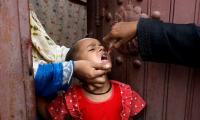The United States and Pakistan share a relationship based on friendship and mutual respect. Over the past 70 years, both nations have shared deep and common goals related to democracy, stability and security, and economic development. More recently, the US government’s civilian assistance program through the United States Agency for International Development (USAID) has aimed at improving the lives of Pakistanis through better access to health, education, electricity, good governance, and economic development.
Having worked as a development professional across four continents in the past two decades, I am honoured and excited to serve in this great country and to reflect on USAID’s strong partnerships with the people, the provincial government, businesses, and non-governmental organisations of Sindh.
USAID has always been at the forefront during Pakistan’s hours of need. In the aftermath of the catastrophic 2010-11 floods, the US provided over $1 billion in assistance to Pakistan – much of it was invested into development programmes in Sindh, and our cooperation with Sindh on development has steadily expanded over the years.
Some of the other best-known examples of US assistance in Sindh over the decades include support to, and establishment of, leading institutions that have contributed tremendously towards socio-economic development of the region. These include the Jinnah Post-Graduate Medical Centre (JPMC) in Karachi; Institute of Business Administration (IBA) Karachi; and Sindh Agriculture University in Tandojam. The more recent establishment of the US-Pakistan Center for Advanced Studies in Water at Mehran University of Engineering and Technology in affiliation with the University of Utah in the US is helping educate a new cadre of researchers equipped to address the development challenges in water-related issues.
Health is one of the key indicators of prosperity. The USAID-funded Maternal and Child Health (MCH) Program has worked closely with the public and private health sectors to reduce maternal, newborn, and child deaths. MCH has trained nearly 50,000 health workers since 2010, in the skills required to help communities, by educating them about best practices and encouraging families to seek proper health care. Our partnerships under this programme with the Sindh government and with the private sector have already resulted in a five-fold increase in the number of women seeking care at health facilities. This is eventually saving countless lives of mothers and infants.
In addition to collaborating with Sindh to strengthen its health systems, the United States has also made substantial investments in constructing urgently needed health infrastructure. The USAID-funded construction of a new $3.4 million Ob-Gyn Ward at the JPMC in Karachi is a good example. This 60-bed ward provides training for over 1,300 healthcare professionals and care for over 140,000 women annually. Our partnership on this project proved so successful that at the request of the government, we agreed to fund a second building at the JPMC, a 120-bed maternity ward that former chief minister Syed Qaim Ali Shah and US Ambassador David Hale inaugurated in May 2016. Another USAID-funded project inaugurated by former chief minister Shah and US Ambassador Hale earlier in 2016 was the Jacobabad Institute of Medical Sciences or ‘JIMS.’ This state-of-the-art 133 bed hospital provides modern health services to over one million people from the city of Jacobabad and surrounding districts of Sindh, southern Punjab, and Balochistan.
Also in Jacobabad, USAID’s $70 million Sindh Municipal Services Program in partnership with the government of Sindh is helping rehabilitate the water supply and sewerage systems. This programme is also working on a social and behaviour change campaign to create awareness on best hygiene and sanitation behaviours. By the end of this project, thousands of people in Jacobabad will all have access to clean, potable water, better sanitation, and improved hygiene conditions, which will have a significant positive impact on their health and well-being. Another area that we strongly focus on is improving the quality and accessibility of education. We admire the sense of urgency that the government of Sindh is bringing to improve its education sector. The USAID Sindh Basic Education Program in partnership with the Government of Sindh is a $155 million effort to increase and sustain student enrolment in primary, middle, and secondary schools in seven districts of Northern Sindh and five towns in Karachi. To do this, we are reconstructing 106 new schools in those areas. The first 23 schools are already complete and the government has engaged private education management organisations to manage these schools in order to ensure sustainability, as well as keep communities more involved.
We see tremendous potential in the youth of Pakistan, those aged 15-29, who constitute approximately 30 percent of the population, to take this country to even greater heights. Therefore, in addition to the substantial investments we are making in basic education, we are also investing heavily in the development of marketable skills to provide these youth with employment opportunities. We will continue to leverage private-sector resources to support vocational training, job placement, and small business development. Our investments in youth will help establish a foundation for long-term economic growth and prosperity. To achieve this, USAID is partnering with UNDP and Amantech on the Youth Workforce Development Program.
Our Merit and Needs Based Scholarship Program provides full tuition scholarships and stipends to talented yet economically disadvantaged youth to earn a bachelor’s or master’s degree at 31 partner universities across Pakistan, including several in Sindh. The scholarships cover student housing, textbooks, a food stipend, and tuition. Programmes include business, agriculture, social sciences, medical, and engineering.
USAID is also assisting in the energy sector, to increase electricity generation to meet rising demand, and only increased generation eliminate loadshedding completely. In Sindh, USAID has funded the rehabilitation of the Guddu and Jamshoro power plants by replacing major equipment to increase the capacity and improve the efficiency of these power plants. These efforts have led to adding enough energy to the system to provide power to over 3.5 million people.
Pakistan is blessed with ample sources of renewable energy. One of the world’s largest wind corridors is in Sindh. To help develop this corridor, USAID has committed $43 million for construction of transmission lines to connect private sector wind projects to the national grid. This will add energy to the grid to provide power for an additional 2.6 million Pakistani citizens.
Though I only arrived in Sindh in September for a relatively short period, I feel blessed to serve in this vibrant province, and I am reassured by the warm welcome and messages of support and encouragement from many in government, NGOs, and the business community. These messages remind me that our successes are only possible by the strength of our partnerships. So let us deepen our relationship, share ideas, and continue to do all we can together to make Sindh even more prosperous.
The writer is USAID’s Acting Deputy Mission Director for Sindh and Balochistan.
Studies have established that most effective interventions for improving quality of education is to train teachers
For Pakistan, 2025 must be year of decisive action and vision
Mpox is caused by monkeypox virus which belongs to family of viruses that includes smallpox virus as well
This digital shift represents profound change, but it also brings with it significant challenges
Benazir Bhutto, like Indra Gandhi in neighbouring India, did not have to start from scratch
Workplace therapy has tangible benefits like improving mental well-being as well as productivity







